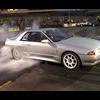Supercharging An Rb20det?
Announcements
-
Similar Content
-
Latest Posts
-
I shall assume that was primed, not running. Now it is time to suspect the wideband sensor.
-
I used to daily mine with a 6 puck button clutch. It drove (to me) like a factory clutch. Roll it off the mark all like normal, no jerking, no bucking. Hilariously no one else could drive it without dialling up about 3,000rpm and chirping the tyres off the mark, or stalling it. It's all about getting used to it.
-
This is mintox. I really like the subtle 'modern' style bits to make it look more... err, modern. 😄 Squint and it could be mistaken for a 90's C-class Benz.
-





Recommended Posts
Create an account or sign in to comment
You need to be a member in order to leave a comment
Create an account
Sign up for a new account in our community. It's easy!
Register a new accountSign in
Already have an account? Sign in here.
Sign In Now